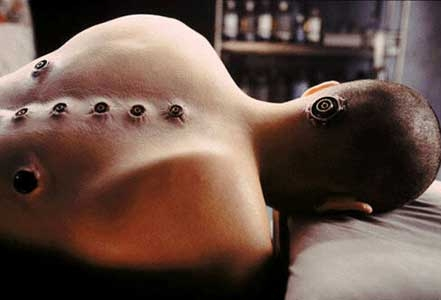
Billionaire futurist space explorer Elon Musk has a new project: a "medical research company" called Neuralink that will make brain-computer interfaces. Musk's projects are frequently inspired by science fiction, and this one is a direct reference to a device called a "neural lace," invented by the late British novelist Iain M. Banks for his Culture series. In those books, characters grow a semi-organic mesh on their cerebral cortexes, which allows them to interface wirelessly with AIs and create backups of their minds.
Having a neural lace, in Banks' fiction, makes people essentially immortal—if they die, they're revived from the last backup. Musk isn't seeking immortality just yet, however. Though he has said publicly several times that he would like to upload and download thoughts, possibly to fight against evil AI, he imagines that Neuralink's proof-of-concept products will be implanted electrodes for treating epilepsy and depression. They will be much like current implants for treating Parkinson's, which work by regulating electrical activity in the brain.
According to The Wall Street Journal, the company will likely be funded entirely by Musk or by the Founders Fund, a VC firm founded by Peter Thiel. The Journal also reports that the company has hired three people already: "Vanessa Tolosa, an engineer at the Lawrence Livermore National Laboratory and an expert in flexible electrodes; Philip Sabes, a professor at the University of California in San Francisco, who studies how the brain controls movement; and Timothy Gardner, a professor at Boston University who is known for implanting tiny electrodes in the brains of finches to study how the birds sing."
Their work will build on over a decade's worth of successful brain-computer interfaces (BCI), beginning with BrainGate, an early BCI tech that allows people to type messages on a computer by picking out letters one by one on a screen. It works by connecting to the brain's motor cortex: when the person thinks about moving, that thought is translated into movements of a cursor. But this method is still quite slow, and Musk's company hopes to speed things along.
Other BCI experiments have involved using computers to control the movements of insects and rats. The infamous "Robo Rat," developed in 2002, could be made to turn right or left while walking by stimulating brain regions related to right and left whisker sensations as well as its reward centers. Today, this kind of technology is so commonplace that there is a science kit aimed at children called the RoboRoach, which allows kids to put a brain implant into a cockroach to control its movements.
It's not clear how well the Robo Rat and RoboRoach scenarios would work in humans, whose brains are far more complex and still poorly understood. But that's not stopping Musk, who is known for making prototypes first and asking questions later. He told Vanity Fair that "we're already cyborgs" and "a meaningful partial-brain interface" is just "four or five years away."
reader comments
147